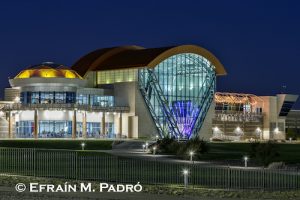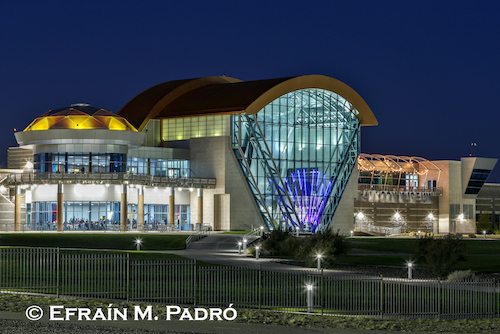There’s a sign at the beginning of a trail in Rocky Mountain National Park that reads: “The Mountains Don’t Care.” In other words, even if you love nature and its beauty, nature couldn’t care less about you—so be prepared for anything. The same applies to travel photography.
Even the best laid travel and photography plans are subject to change due to bad weather, construction, ever-changing hours of operation, and numerous other factors.

A couple of weeks before the start of GEP’s Balloon Fiesta Photo Expedition, we sent out an email to the attendees reminding them of a few things—including bringing warm clothing to the event. Although fall days in Albuquerque are often sunny and warm, early mornings can be downright cold, and frozen fingers are one of the biggest enemies of good photography.
The following is a list of travel photography challenges—and how to handle them…
Bad weather: Although visiting a location during bad weather can be disappointing, this is one of the easiest challenges to overcome, especially in urban locations. When the skies are hazy or overcast, focus on areas that photograph well up close — architectural details, people, flowers, and market goods.
At twilight, when the skies turn cobalt blue, even bad weather looks good, too. Look for structures that are illuminated such as churches, statues and plazas. After a rain, puddles and other wet surfaces provide a great opportunity to photograph reflections.
Under construction: I don’t know how many times I’ve visited a location to photograph a particular architectural wonder… only to find it hidden behind scaffolds. This is especially common in older locations like Europe where many of the historic buildings are at least hundreds of years old.
The first thing I do is take pictures of the structure anyway, both for historical purposes and to compare to your own photographs taken if you return. I then photograph sections of the structure not under construction, architectural details, and the interior if possible.
Sorry, we’re closed: If you visit a place when it’s closed but there’s a security person or other staffer on site, don’t hesitate to ask for permission to enter.
During a trip to Buenos Aires, I wanted to get some “aerial” images from the historic “Torre Monumental” (Monumental Tower) but was informed by the security guard it was closed for repairs. After explaining that I was a freelance photographer and that I did not have time to return later, the guide escorted me up the tower and allowed me to take some pictures. I handed him a couple of dollars after the visit to thank him for his courtesy.
Improvise: A few years ago, I was in Mexico’s Yucatan Peninsula photographing Chichen Itza, the ancient Maya city. I always use a tripod when photographing architecture, but unfortunately tripods are not allowed in the archaeological site (this is a common restriction in popular sites where a tripod could pose a tripping hazard).
Undeterred, I put my camera on a table-top tripod and placed it on a number of flat-topped trash cans that were placed around the site.
This was not an ideal solution, but it allowed me to get some nice (and tack sharp) architectural shots. As I was leaving the site, I was asked to fill out a survey regarding my visit. The last question asked if I had any suggestions for improving my visit. My response? More trash cans.
It’s impossible to have a plan B for every eventuality, so, from time to time, you’ll have to improvise on the spot.
Besides my experience in Chichen Itza, I’ve photographed inside art galleries on short notice (art galleries are notoriously sticky when it comes to granting permissions to photographers); spent an afternoon photographing reflections on puddles after a particularly nasty storm; and photographed close-ups of aspen leaves on the ground after a wind storm blew the leaves off the trees.
When facing ever-changing conditions in the field, be creative, be persistent, and you’ll be successful.
The image above is of the International Balloon Museum in Albuquerque which I photographed on the day the balloons didn’t fly because it was too windy.

